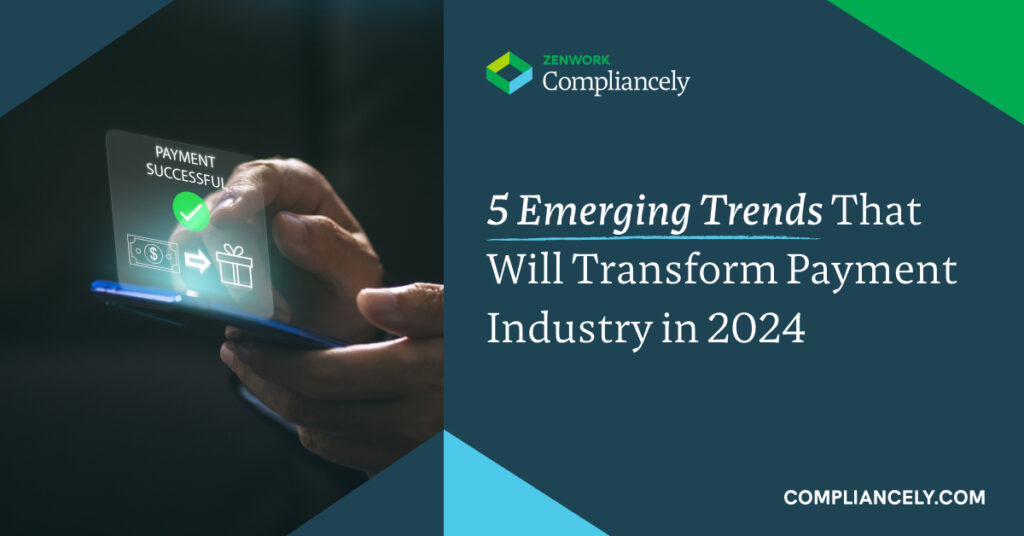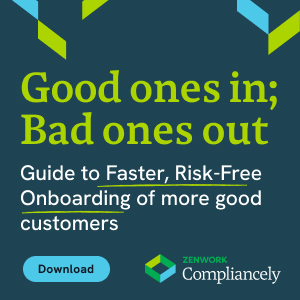5 Emerging Trends That Will Transform Payment Industry in 2024

The payments industry has been going through a phase of positive, constant transformation and innovation. It’s been the driving force for this sector to grow and evolve globally at an incredible pace. That’s why it’s at a critical standpoint in terms of 2024 because the financial landscape faces high risks along with these positive changes at play. Risk horizons are rising with technological advancements like Synthetic IDs, Deepfakes, and Account Takeover Schemes, making financial crimes more sophisticated than ever. To support the market’s positive outlook and counter the upcoming threats, the market players must work together towards the safety and security of all stakeholders involved in the ecosystem.
The digital payment industry is the engine that powers the digital economy, offering 24*7 connectivity that bridges gaps between individuals, enterprises, and financial institutions. This seamless flow of payments fuels the global economy while ensuring that the wheels of commerce continue to turn without interruption. All of this was possible because the leading players involved were up on their toes to follow all the opportunities and counter threats coming their way.
So, if you also want to join the rally of what the best have set a standard for, you can follow the trends of 2024 that are going to affect the payments industry with our blog. Make that early decision about how you want to tackle the next wave of transformation in favor of your business. Overlooking this could present a challenge, but it also offers a valuable opportunity for industry and business growth.
5 Key Payments Industry Trends You Should Prepare For.
1. AI is a hot topic you should pay attention to.
According to a recent report from McKinsey, Artificial Intelligence across the banking and fintech industry could deliver a value equal to an additional $200 billion to $340 billion annually in their industries.
It’s a discussion point among the leading market players of the payments and fintech industry that the top 3 processes in the organizations they want to introduce this technology are customer service (43%), fraud detection (43%), and marketing (40%). From this, you can understand that AI is helping to fill the gaps in these processes and further automating the whole system.
That’s what industry experts are working to crack: providing customers with a frictionless experience with the best security and privacy measures. An example of this is Amazon’s “Pay-by-Palm” technology. They are doing it by combining biometric authentication, generative AI, and machine learning. Behind the curtains, Generative AI authenticates the customer’s identity and processes.
Many players are leveraging AI to boost their customer experience. Others should also consider whether adopting this trend could benefit their businesses. However, remain vigilant against identity fraud and other financial risks while pursuing this strategy.
2. The Rise of Synthetic Fraud: Balancing Security Measures and Privacy Expectations in the Payments Industry.
Fraudsters are using Generative AI to conduct synthetic fraud, which will cost the card industry over $400 billion in the next decade. To combat this, businesses implement multi-layered checks and tools like Compliancely to counter identity theft threats.
Consumer privacy and data security are top concerns, with reducing payment fraud being the most urgent issue for 62% of businesses. Synthetic identity theft is becoming a more significant threat due to the ability to create identities at scale with credible personas. This will make it one of the most challenging financial crimes to monitor in 2024.
Decision-makers should be ready to combat AI-powered frauds, including deepfakes and account takeover schemes. They must prioritize implementing robust security measures while ensuring that these measures do not obstruct their customers’ user experience. If customers encounter obstructions, they may begin to switch platforms.
3. Capitalizing on the Growth of Account-to-Account Payments and Digital Wallets.
The rise in digital wallets and account-to-account payments has transformed the global payments landscape. Platforms like Stripe, handling over $1 trillion in payments in 2023, are reshaping online commerce. The trend towards instant transactions and merchant support will continue in 2024, particularly in the U.S. with services like FedNow. It’s all happening because businesses desire to avoid card processing fees and gain faster access to their funds. That’s one of the primary reasons the industry is experiencing this shift towards more accessible and user-friendly payment solutions.
Market players must consider geographical regulations, dispute resolution processes, and real-time currency conversion for peer-to-peer systems to make these systems more efficient. They can quickly achieve this by integrating solutions that help them solve these issues. Major payment providers in the United States are partnering with companies like Compliancely to assist them with their identity verification needs and OFAC sanctions verification processes.
4. Customer Experience Revolution through Contactless and Gamified Payments.
Leading market players are trying to adopt new technologies to provide memorable experiences to their customers. So, it will encourage them to return to their platforms and spend more time on it. They are becoming successful in that by providing simpler and more engaging ways to make purchases through contactless payments, making it a frictionless payment-making experience for them. According to Juniper Research, contactless payment transactions will exceed the $10 trillion mark by 2027.
Gamification of payments using game mechanics fosters loyalty and is becoming increasingly popular. The industry player can utilize this insight in their favor to give reasons for their customers to return to their platform. Payment technology is no longer just about closing the sale; it’s about setting up the next one.
5. The Compliance Challenge in the Face of OFAC Sanctions and Regulations.
The payment industry has faced numerous challenges in the past year due to the ongoing Russia-Ukraine War and the sanctions imposed by various countries. The ever-changing global sanctions landscape presents a significant challenge for companies; even a small mistake can lead to severe consequences.
As the regulations tighten, especially in newer high-risk industries, companies must rely on AML or OFAC sanctions checks to ensure they are not engaging in any illegal activities. Tools such as Compliancely’s API can be highly beneficial in assisting with these checks. can be highly beneficial in assisting with these checks.
Read more to know if you need to verify against OFAC: OFAC Sanctions Search-Which Businesses Need the OFAC Watch List.
To effectively detect suspicious behavior, companies must comprehensively understand all their trading activities, including traditionally non-transactional areas like KYB (Know Your Business). It has become crucial to identify critical data changes, such as directorship, to uncover potential criminal use of corporate structures.
Read to know more about the key trends: 5 Identity Verification Trends to Watch for in 2024.
Way Forward
In 2024, we’ve seen that the payments industry is at a crossroads of massive transformative changes fueled by a mix of innovation and risk. The trends we’ve seen so far have painted a vivid picture of what lies ahead. From AI integration, the rise of synthetic fraud, the growth of account-to-account payments, the revolution in customer experience through contactless and gamified payments, and the compliance challenge in the face of OFAC sanctions and regulations are reshaping the industry. As we navigate through these dynamic shifts, one thing becomes abundantly clear: the imperative for industry players to stay ahead of the curve.
The rise of digital wallets and contactless payments indicates a shift in consumer behavior. However, businesses need to implement robust compliance measures to safeguard against bad actors. Solutions like Compliancely can provide a competitive edge by enhancing customer experiences and driving growth in the digital economy.
The message is clear – it is time to act. Businesses should embrace innovation, invest in strong identity verification solutions, and work towards a safer and more resilient future for the payments industry. By doing so, they can position themselves as leaders of change, protect their interests, and contribute to the overall progress of the financial ecosystem.
